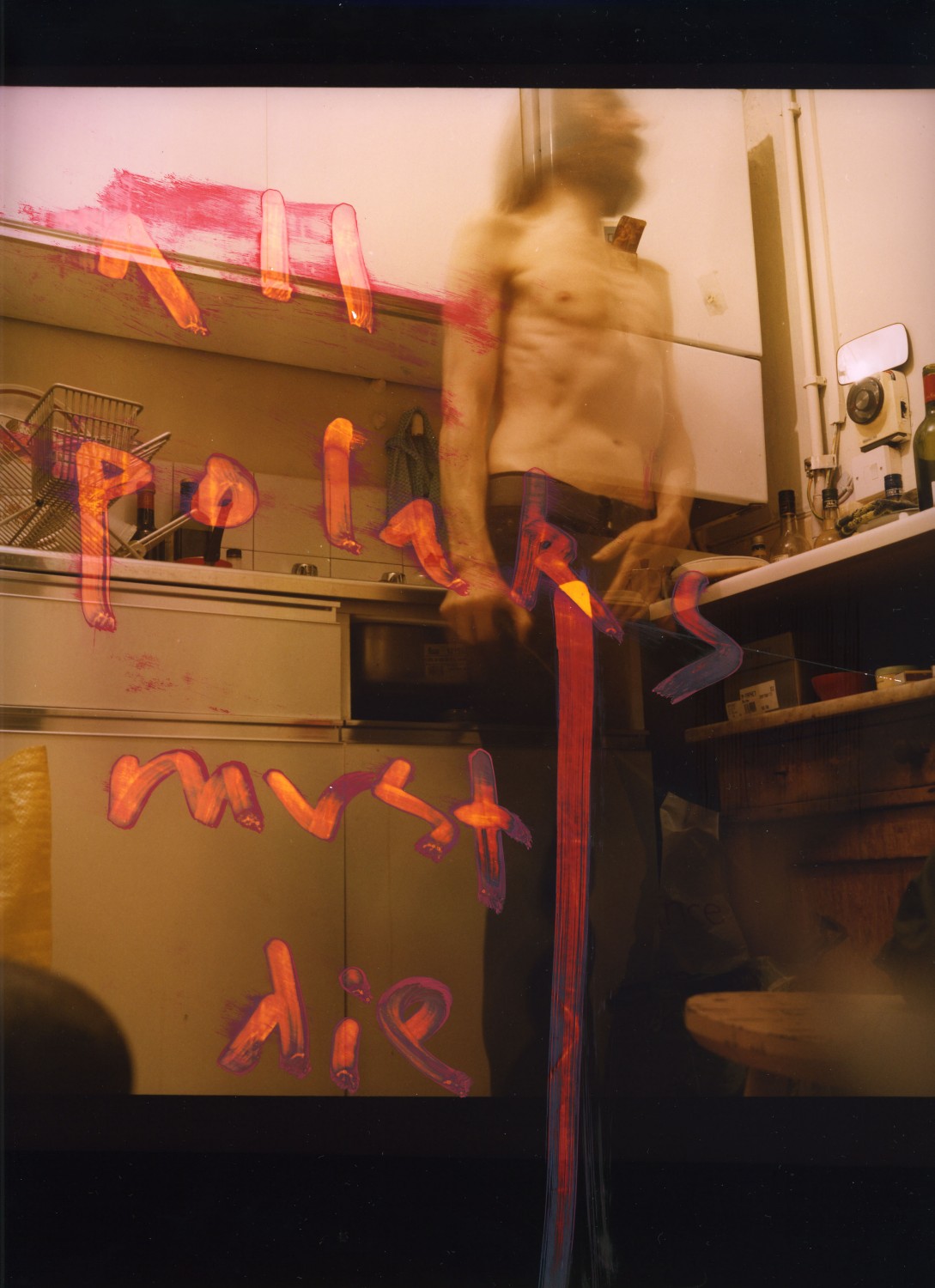
01.04.2011 19:00:00
Pav Mxski
by Ivan Mečl
Kingdóm
Born 14 March 1964 in Warsaw. In late 1971 he leaves Poland with his mother, settling first in London and later in Manchester. In the end, however, he ends up in Saddlewoth parish, specifically in the village of Diggle, with a textile mill at its center. The region is known for a series of brutal child murders and pagan traditions. It is also the home of the Barclay James Harvest musical group. It is a highly inhospitable, cold and wet region.
In 1981, he returns to London on his own. He is interested the women’s movement and Buddhism, and begins to work for the left-wing feminist magazine Camerawork. He later works as a photograph for Wire and Straight no Chaser magazines, as well as for the music weekly Sounds. He photographs the early days of the rave scene, as well as life in London’s East End.
In the late nineties, he becomes famous and works as a photographer for clubs, music magazines, and eccentric celebrities. Like every modern Londoner, he starts to consume drugs and alcohol. After hundreds of years of drug addiction, the English no longer experiment with drugs – they simply eat them. Pav buys himself an exclusive orange BMW Coupé and has fun.
In 1986 he spends one year studying literature in Warsaw. He studies the history of Poland. And then returns to London.
In the spring of 1994, he and his new, well-to-do girlfriend leave for Paris. This year-long Paris party among the city’s high society leaves him penniless, but he also gets to know a part of Europe other than the British Isles and Eastern Europe. Defeated and in debt, he returns to the kingdom. He gets rid of his orange BMW and loses all interest in the world – including the income it provided.
The Paris affair begins an experiment with his own physical presence. While still in France, he creates the cycle “(In Fact) I Want U To Be My Dog.” As a bearded man wearing a hat, in the distance or on a plastic chair by a booth, a naked man with clothed people, clothed with naked people, in an urban situation or engaged in unclear sexual practices. He completes the series in 2001; since then, his photographs periodically return to his relationship to his mother, images of the relationship and of the mother.
After 2003, he begins to collaborate on his photographs with his Austrian girlfriend Dagmar. He stops taking drugs and the two of them throw themselves into alcohol. The photographs capture scenes of drinking together, alcoholic excess and sobriety. He write poetry.
There follows a period of moving. People in London are constantly moving. He moves to Hackney, where he later opens the Slaginc gallery in his flat. But for drinks, he travels to the West End. You can’t live in London without drinking. He is forced to move to Poplar, where he creates the cycle “Die in Poplar” – a dismal picture of a city district inhabited by foreigners. Then he moves up to Dalston Lane, where he stands by a window in the photograph “Cztery / Four”.
Cabal
in
betrayal
Some people will never want to become members of communities, associations, nations, or ethnic minorities. Not even if it might help them. Artists reject their audiences and are rejected by curators, gallery owners, and publishers. And, as citizens, they are all rejected by their politicians. And politicians are rejected by the governments whose principles they themselves ponder. Governments are rejected by alliances and unions. History is a series of large and colossal betrayals, of comprehensible and incomprehensible betrayals. Treachery and trickery forms the basis for personal lives and daily intimacy. Maybe there is no such thing as original sin, only original betrayal – God’s betrayal of Man and parents’ betrayal of their children. Merely by the fact that they will claim anything. People can always say that they don’t know what they are doing. Pav betrayed Poland, Poland betrayed Pav, Poland was betrayed by England and France, the Poles betrayed the Czechs, the Czechs betrayed the Serbs. Who’s next?
The North
Bamboozled citizens who somebody hoodwinked into thinking they were special because they own a plasterboard stereohome in the suburbs feel like capitalists and vote conservative. And the kingdom falls apart in the north. Maybe it’s never been much better. The places up north that Pav selects in 2010 for his extensive series “Queer’s Up North” are characterized by the discomfort and unpleasantness of the exhibited and impounded environment. Entire cities built not for people, but for some other species whose habitations people have inherited. And between the houses, in a park or on a square, an out-of-place bearded man.
Traveling north means traveling downward. Poland or Scotland. During one visit to his mother, he takes a photograph that he later calls “It’s Over.”
The exhibition “All Polaks Must Die” shows the last eleven years of the artist’s work. The photographs will be on display until 30 April 2011.